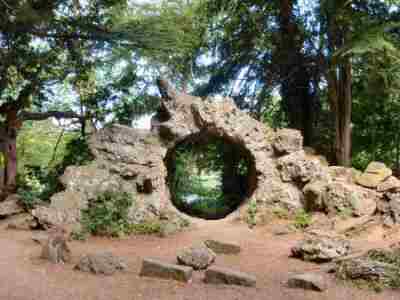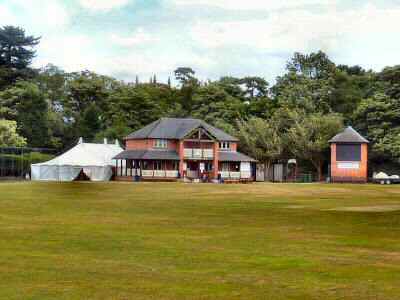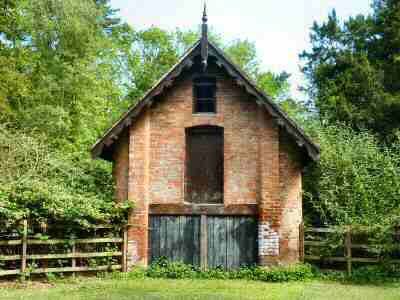ELVASTON

INFORMATION
Where is it? – It is located to the southeast of Derby. On the B5010 and can be accessed from Borrowash in the north. Also, from Alvaston to Shardlow Road in the south. (SK413332)
What to do? – Explore the grounds of Elvaston Castle the first Country Park to be opened in Britain. Set on 200 acres of parkland with an ornamental lake, extensive gardens, stony grottoes, rock archways and many other interesting features. – Visit St Bartholomew’s Church and relax in the lovely surroundings. – Take a walk around the ancient village of Elvaston.
Where to eat? – The Harrington Arms is situated at Thulston, a short distance to the south of Elvaston village. It is a traditional village pub, serving fresh home-cooked food. – Tea Rooms located at Elvaston Castle. Please check the arrangements before visiting.
Other places to visit – Shardlow is one of the best-preserved inland canal ports in the country. It is a fascinating place to explore, busy with boats, now used for leisure and not for commerce. The boats range from traditional narrowboats with brightly painted liveries to pleasure crafts of all shapes and sizes. A walk along the canal towpath brings you into contact with many of the old buildings of the Canal Age. – An interesting place to visit is Shardlow Heritage Centre which is housed in the old Salt Warehouse. The centre features displays of canal and village life of the historic inland port. It is normally open at weekends in the summer. – Pride Park Football Stadium is the home of Derby County Football Club and provides behind-the-scenes tours of the stadium. These are likely to be of interest to the visitor whether they are football fans or not.
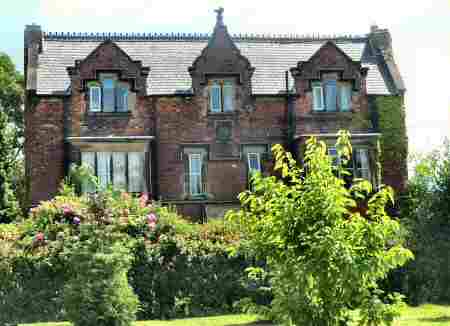

PROFILE
The pretty village of Elvaston, dominated by its castle and gardens, together with Thulston and Ambaston make up the parish of Elvaston. Despite its proximity to the southern fringes of Derby. The area remains rural in character with several working farms in the neighbourhood. Thulston the largest of the three, has the only pub, and Elvaston has the church, the village hall and the castle and grounds. Ambaston is tucked away close to the River Trent.
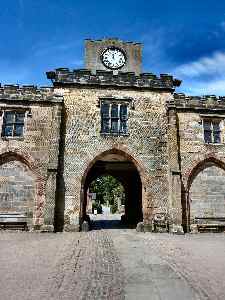
Early Days
The first recorded settlers in the parish were the Saxons. However, they were not the first to live in the area. Gravel workings at the neighbouring village of Shardlow, have revealed Iron Age artefacts. At the time of the Domesday, Survey Elvaston was just a church, corn mill, blacksmith and 52 acres of land.
Following the Norman Conquest, the estate passed through the hands of several families. In the early 16th century, however, it was acquired by the Stanhopes. In whose hands it remained for nearly 400 years. During the Civil War, the Stanhopes, a staunch Royalist family. Found themselves sandwiched between Derby and Nottingham who both supported the Parliamentarians. This led to the house and gardens being ransacked by soldiers searching for arms.
Gothic Castle
The present-day gothic-style castle was designed in the early 19th century by the architect James Wyatt, for the 3rd Earl of Harrington. The Earl also wanted ‘Capability’ Brown to landscape his 200-acre estate. But Brown declined and said, ‘The place is so flat and there is such a want of capability in it.’ Following the death of the 3rd Earl, his son gave the task to William Barron. A 25-year-old Scot who had trained at the Botanical Gardens in Edinburgh and was looking to establish a reputation as a landscape gardener.
William Barron
The first problem Barron had to deal with was the waterlogged ground. This he solved by having drainage ditches. But, it was only after five years that the soil was finally ready for planting. By this time the Earl was becoming impatient to see results. So Barron planted fully grown trees, keeping them alive and healthy by transporting them vertically. With their branches outstretched and their rootballs intact.
To the north of the castle, Barron created an ornamental lake with islands and rockwork. On the southern side, he developed half a dozen formal gardens. To compensate for the lack of an interesting view. He enclosed the gardens with high hedges to create a view within the gardens themselves. In contrast, he designed two striking open avenues 50 feet wide and 400 yards in length.
By 1850 Barron had planted examples of every species of European conifer then known. Eleven miles of yews, a yew tunnel, a pinetum, a kitchen garden and a lime avenue leading from London Road to the Golden Gates. The elaborate blue and gold, cast-iron gates were acquired by the Earl as a ‘spoil of war.’ Having reputedly been taken from the Royal Palace at Madrid to Versailles and onto Elvaston.
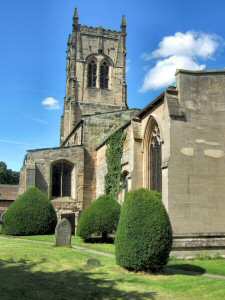
Public Opening
Until after the death of the 4th Earl, the gardens remained a private place. His brother who succeeded him in 1851, opened the gardens to the public. Despite having to pay a high admission price for those days, thousands of people visited, often travelling considerable distances.
The estate remained under the control of the Harrington family until 1939. After that, the house was used for a short period of time as a teacher training college. It was then left vacant until 1969 when it was established as the first country park in England.
Close to the castle is St Bartholomew’s Church with its fine perpendicular west tower. Marks can still be seen on Sir John Stanhope’s tomb, made by the Roundheads’ swords. Only a short distance from the church is Elvaston Cricket Club’s impressive tree-lined ground with its modern pavilion. The club played at Lords for the first time in 1994, when they won the National Village Cup. They have made significant progress in recent years and are now one of the leading teams in the county.
The Village
There are several interesting buildings in the village. Including the Village Hall, which was built in 1852, and was previously used as a Church of England School. The Clockhouse, a three-storeyed building built as a ‘Refuge for the aged Poor’ is now a retirement home. The former vicarage, Thurlaston Grange, is an attractive listed building dating from the Georgian period.
The Country Park has over 200 acres of woodland, parkland and formal gardens and is the home of the Elvaston Local Nature Reserve. The land to the north of the park is used to stage events including the County Show and Elvaston Steam Rally.
The film “Women in Love” created a lot of local interest at the time of its production. Elvaston Castle was used for interior (fight) and exterior (drowning) scenes.
